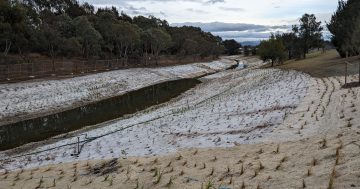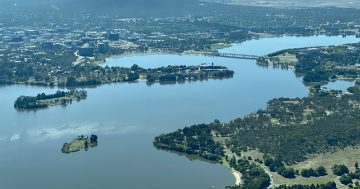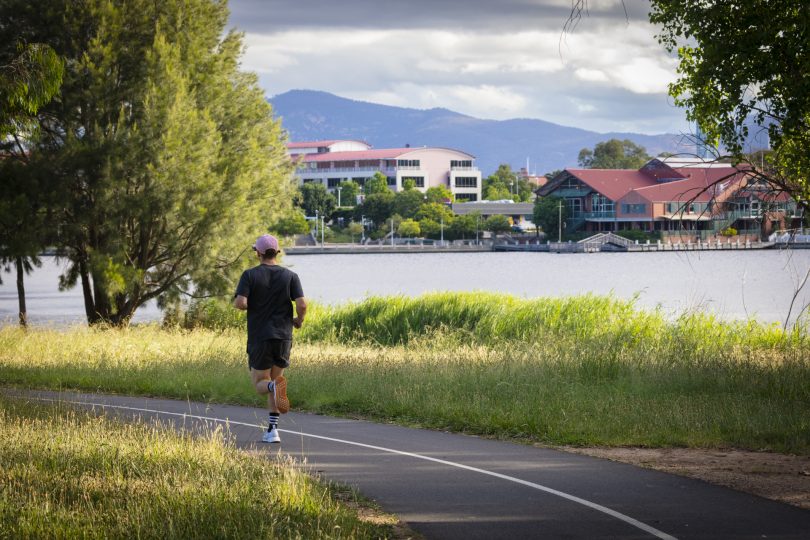
Lake Tuggeranong will receive up to $1.5 million in funding to address the ongoing algal issues. Photo: Thomas Lucraft.
The ACT Government is pouring an extra $14 million into our waterways over the coming year in an effort to keep pollutants out.
The funding boost will be directed to ACT Healthy Waterways, a joint initiative of the ACT and Australian governments to improve the quality of water entering our lakes and waterways and flowing downstream into the Murrumbidgee River system.
The project has previously included the construction of infrastructure – like wetlands, ponds and rain gardens – at several critical locations across Canberra and funding research trials, a community education campaign and improvements to water monitoring practices.
Up to $1.5 million will address ongoing algal issues at Lake Tuggeranong by reducing the amount of leaf litter and rubbish making its way down the region’s networks of stormwater channels.
“We all love the beautiful lakes, rivers and wetlands of our bush capital and want to keep them healthy,” ACT Minister for Water Shane Rattenbury said.
“This additional $14 million investment in the ACT Healthy Waterways program will help care for our waterways by keeping pollutants from entering stormwater, reducing nutrient loads through infrastructure like wetlands, running education programs and supporting vital research to better understand pollution sources.”
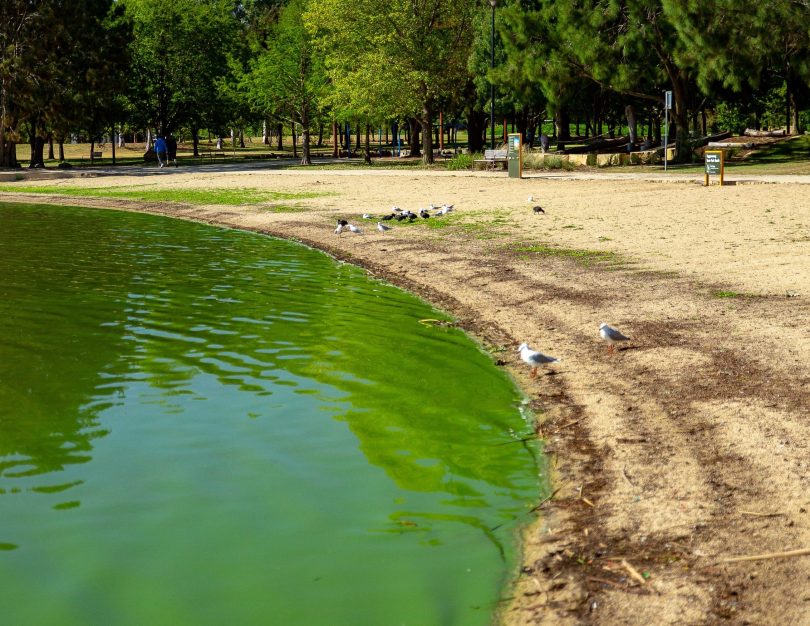
Algal blooms make Lake Tuggeranong unusable. Photo: File.
The funding forms part of a research agreement between the ACT Government and the University of Canberra to investigate sources of water pollutants in the lake and potential treatments.
University of Canberra vice-chancellor and president Professor Paddy Nixon said they had worked closely with the government over the past five years to better manage water in Canberra, “including work on improved stormwater management in urban developments and management of the water quality in Lake Tuggeranong”.
“We are looking forward to expanding this collaboration even further in order to help safeguard waterway health for the Canberra community,” he said.
“This is particularly important as our city moves into a future likely to be dominated by more climatic extremes.”
The government will also talk to public and private landowners across Canberra to reduce fertiliser use in catchment areas.
Rural catchments, streams and rivers in bushfire affected areas won’t miss out either.
The rest will give renewed impetus to work already undertaken by The Leaf Collective, a community-based program that helps prevent leaves and grass clippings from ending up down stormwater drains.
The Leaf Collective ran two pilot programs over autumn last year and summer this year to get the community to consider what happens to leaves flushed down the stormwater drain.
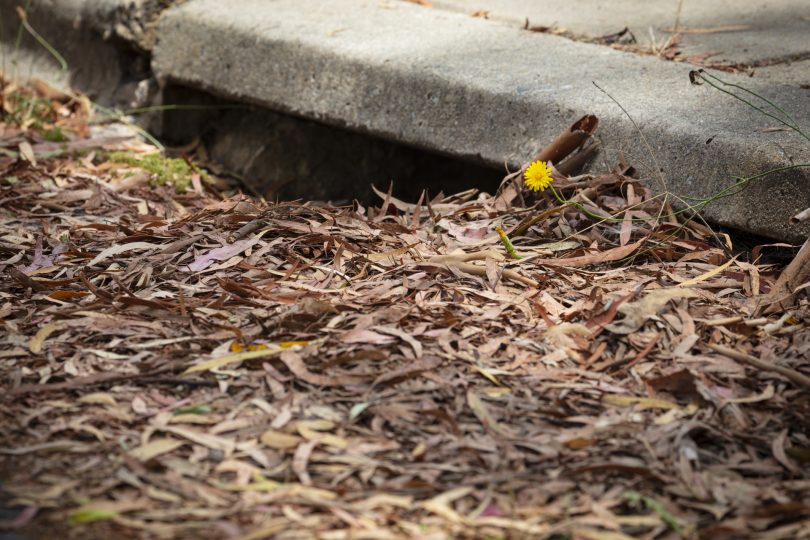
Leaves are a significant source of water pollution. Photo: Thomas Lucraft.
Social Marketing @ Griffith founder Sharyn Rundle-Thiele oversaw both programs and said that as leaves decompose in water, they release chemicals that contribute to algal blooms.
“We’ve all got a role to play and the more we all jump into it, the quicker the water quality will be improved,” she said.
She added that there are still gaps in the knowledge behind what works and what doesn’t and the extra money is vital in helping fill these gaps.
“There are excellent initiatives already in progress and extra funding is vital to get more action underway,” she said.
The additional funding now brings the program’s total value to $20.5 million since its introduction in June 2021.
Thanks to an ACT Greens election promise to spend $30 million on healthy waterways projects, there is even more on the horizon.












